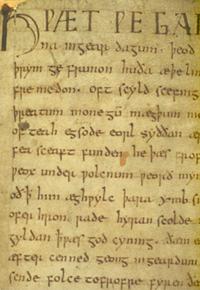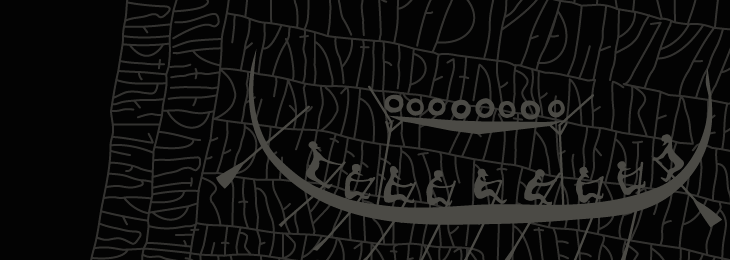What is Beowulf?

The untitled Anglo-Saxon epic poem known as Beowulf survives in a single manuscript source dating from the early eleventh century (British Library, Cotton Vitellius A. XV). Although scholars do not agree on the dating of the poem – theories range between the sixth century and the date of the manuscript – it is clear that the story has its roots in the art of the scop (‘creator’), the bardic story-teller and reciter at formal and informal gatherings, whose services were essential to the fabric of tribal society in early medieval England.
The scop would re-tell the story of Beowulf, in song and speech, perhaps accompanying himself on a six-stringed harp (this we know from contemporary accounts, although musical notation was superfluous and only remnants of instruments have survived). His courtly audience was attuned to the finest details of sound and meaning, metre and rhyme, timing and mood. The performance – which, for the whole epic, might last between five and six hours – would never be exactly the same twice, as the ‘singer of tales’ subtly varied the use of poetic formulæ to shape his unique version of the story.
The central dilemma of any attempt to re-vocalise a medieval text as living art is based on the fact that a written source can only represent one version (and possibly not the best version) of a text from a fluid oral tradition. The impetus to make this attempt has come from many directions: from the power of those bardic traditions, mostly non-European, which still survive intact; from the work of instrument-makers who have made thoughtful renderings of seventh-century Germanic harps; and from those scholars who have shown an active interest in the problems of turning written words back into an oral poetry meant to be absorbed through the ear/spirit, rather than eye/brain. But the principal impetus comes from the language of the poem itself, which has a chilling, magical power that no modern translation can approximate.


